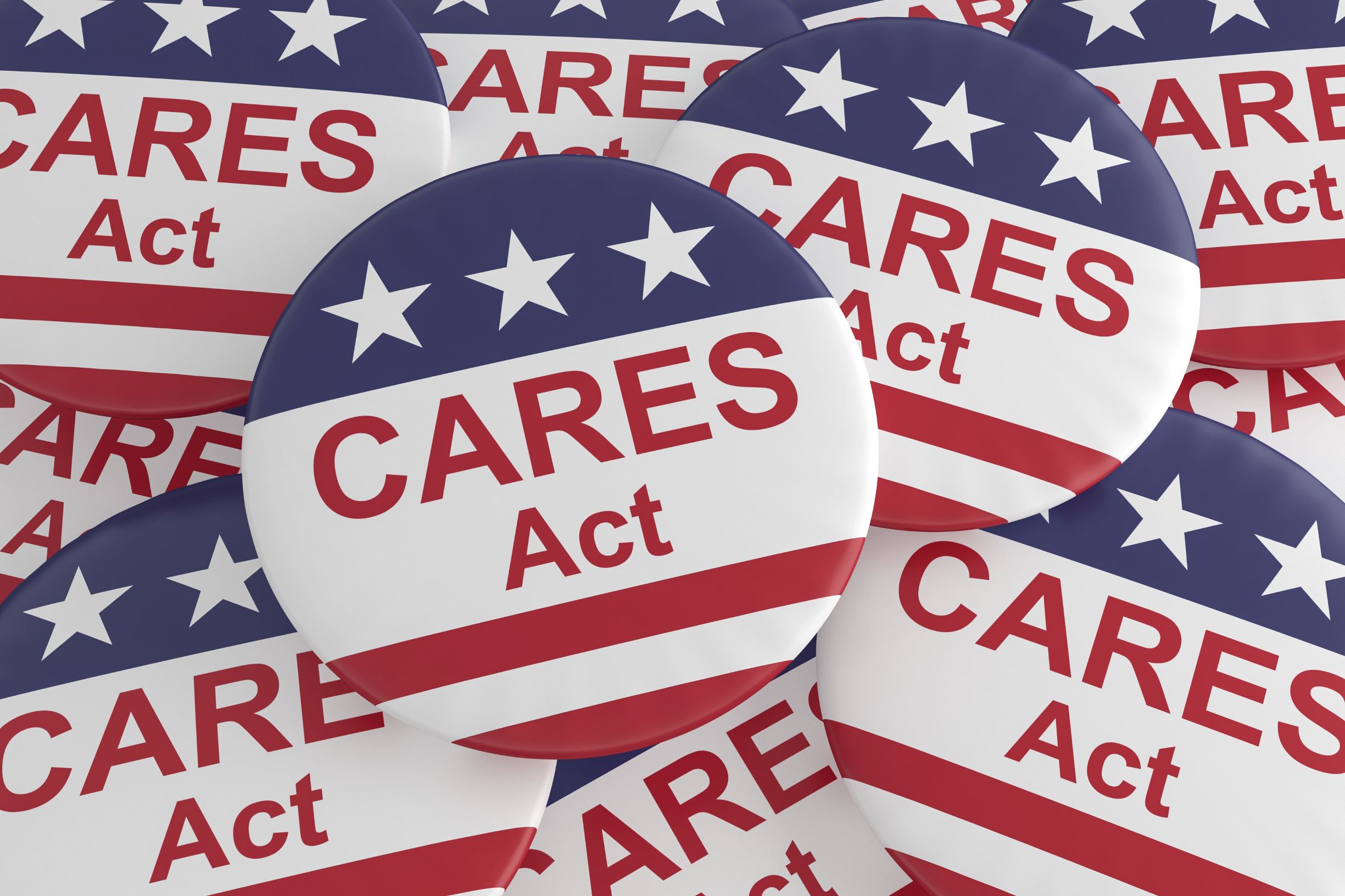On Friday, March 28, President Trump signed the CARES Act into law. The CARES Act is an economic stimulus package designed to help small businesses and individuals during these trying times. As COVID-19 has forced people to file for unemployment and thousands of small businesses to cease or curtail operations to prevent the spread of the virus, this stimulus package (along with measures announced by the Federal Reserve last Monday), provides between $2-$6 trillion dollars of financial assistance. There are excellent resources available, as well as some misinformation about the stimulus. The newness of it requires more detailed analysis, but the main points affecting individuals as we see them are as follows:
The Stimulus Check
The most talked about part of the CARES Act is the individual stimulus payment, or as it’s officially titled, the “2020 Recovery Rebate for Individuals.” The purpose of this check is to boost consumer spending and economic activity. The Act allocates $500 billion towards these stimulus checks. Every eligible U.S. citizen, and some immigrants whose income is below a certain threshold, will receive a $1,200 ($2,400 for married taxpayers) stimulus check. Individuals will also receive an additional $500 for any dependent children under the age of 17.
Your Adjusted Gross Income (AGI) is used to determine your qualifying income. The AGI phase-out begins at $75,000 for individual filers, $112,500 for those who file as head of household, and $150,000 for married couples, at a rate of $5 for $100 over the phase-out. For example, if an individual earned $75,100 in 2019, and they filed their tax return, their economic stimulus check will be $1,195. The amount phases out entirely once individuals reach $99,000 of Adjusted Gross Income ($198,000 for married taxpayers).
Individuals who are not required to file a tax return will still be entitled to a check.
The income figures mentioned above ultimately will be determined based on your 2020 AGI. However, since the 2020 tax year is not over and the goal is to get the money distributed quickly, the amount will initially be determined based on your 2018 income tax return, or your 2019 income tax return if it has already been filed. Then, when you prepare your 2020 tax return, the amount will be reconciled, with any shortfall given to you as a tax credit. It is interesting to note that there does not seem to be a provision in the law requiring individuals to repay excess funds should you receive too much of a payment.
Because of the provisions in the CARE Act, here are a couple of things you may want to consider. If you have not yet filed your 2019 income tax return, you may want to submit it now if the amount of the stimulus check will be higher than if the IRS uses your 2018 tax return. Also, the stimulus checks will be directly deposited into the account you set up direct deposit for from your most recent tax return. But what if you no longer have the bank account you used in the past? In that case, the IRS will mail a check to your address of record. If you are collecting Social Security, the checks will be deposited directly into the designated account where your Social Security is deposited.
Below is a link to the IRS website explaining the various tax benefits. It is updated frequently with new facts as it relates to Coronavirus Tax Relief: https://www.irs.gov/coronavirus.
Retirement Plan Provisions
Along with the stimulus check, the CARES Act also enacted several temporary benefits for retirement plan participants.
The first provision allows participants under the age of 59 ½ to take distributions up to $100,000 from their retirement accounts without incurring a penalty. Mandatory Federal tax withholding on these distributions, if from a qualified retirement plan such as a 401(k) or 403(b), are also waived. It is important to note that the distribution is still subject to Federal and State income tax. However, the distribution can be spread over the next three tax years to help reduce and defer the payment of income taxes. It is unclear at this time if states such as New Jersey and New York will follow these temporary rules, so a careful analysis needs to be done to determine if this makes sense.
The above rules do not apply to everyone. To take a qualified Coronavirus-Related Distribution, you must meet specific criteria. You, your spouse, or a dependent must be diagnosed with COVID-19, or you need to be affected by the crisis through a loss of income due to fewer hours, being laid off, or owning a business that is unable to operate. By design, these rules are quite broad, so many will likely be able to take advantage of this provision.
The second provision increases the amount of a loan that a qualified person, as defined above, can take from their retirement plan. You can now take the lesser of 100% of the plan balance or $100,000. Loan repayment can be deferred up to one year, and you would have up to three years to pay back the loan from your retirement plan. Under normal circumstances, we would not typically recommend you access your retirement funds before actual retirement. However, given these unique circumstances, in certain situations, this may now be appropriate.
2020 RMDs Waived!
A major provision of the CARES Act is the waiving of your 2020 RMDs. This includes all RMDs from all retirement accounts, including IRAs, employer retirement plans, 403(b)s, 457(b)s, and inherited IRAs. This is very beneficial to many retirees as you can avoid selling investments in your portfolio after the recent market drop.
Even those individuals who turned 70 ½ in 2019 and were waiting to take their 2019 RMD by April 1, 2020 can now defer that distribution. The Act further allows people who must take required distributions under the five- year rule to ignore 2020 as one of the five years.
Now, what do you do if you have already taken your RMD for 2020? There are a couple of options that may be available to you.
If you took your RMD within the last 60 days, you might be able to “roll the distribution” back into the retirement account. Note that this only applies to people who have not done this type of rollover within the past 12 months.
You may also be able to designate your RMD as a Coronavirus-Related Distribution. Assuming you qualify under the same definition discussed above for retirement plan participants, you will also be allowed to roll the RMD back into your plan.
Expanded Charitable Deductions for 2020
As you may know, many of the less fortunate rely on charities for assistance. The charities also rely on donations, which can be more challenging to come by when times are tough. To incentivize increased donations this year, the CARES Act temporarily expands the charitable deduction limit from the usual 60%-of-AGI to 100%-of-AGI for cash contributions. Excess contributions over the increased limit will be allowed to carry forward indefinitely. So, if you are charitably inclined, there may be no better time to give to charity.
However, there are some limitations on which organizations you can donate to and take a tax deduction if it exceeds 60% of your AGI. Donations must go directly to 501(c)(3) organizations. Donations to Donor Advised Funds and 509(a)(3) supporting organizations will not be considered as charitable deductions if these amounts exceed the AGI limit.
An above-the-line charitable deduction up to $300 is allowed for those taxpayers who cannot itemize their taxes.
Unemployment Provisions
Recognizing that a stimulus check may not be enough for every individual affected, the CARES Act also made changes to Unemployment Insurance.
Unemployment benefits are available to newly eligible workers who have lost their job or had to quit their job due to their own Corona-related illness or to care for someone with the illness. The amount of unemployment insurance for these people will be equal to the amount they are entitled to under their state benefits plus $600 per week. The benefit period has also been extended to 39 weeks for those affected. Also, if you are already collecting unemployment, you will receive an increase of $600 per week and your benefit period will be extended an additional 13 weeks (beyond the traditional 26 weeks).
Additionally, people who typically may not be covered, such as freelancers, independent contractors, and gig workers, will be eligible for benefits.
In this first part of our analysis of the CARES Act, we reviewed the tax-specific provisions affecting individuals. Part Two will examine some of the business provisions included in the CARES Act, including the Paycheck Protection Program.
Stay tuned…







